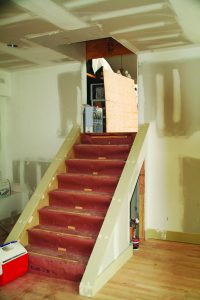Spending so much time at home during the pandemic led many homeowners to spruce up their homes. According to HomeAdvisor’s 2021 State of Home Spending report, spending on home improvements increased by an average of $745 per household in 2020.
In the face of travel restrictions and social distancing guidelines, many homeowners pivoted in 2020 and spent money they initially intended to use for vacations on home improvements. Though many such projects required the services of a professional contractor, others, including the most popular project among the 5,000 homeowners who participated in the HomeAdvisor report, were do-it-yourself endeavors. That not only gave homeowners’ homes a new look, but also gave them something to do during quarantine. The following are the five most popular home improvement projects of 2020 according to the HomeAdvisor report.
1. Interior painting: Just under 35 percent of participants reported taking on an interior painting project in 2020. Interior painting projects can be perfect for DIYers, but homeowners also can trust this task to skilled professionals.
2. Bathroom renovations: Real estate professionals routinely report how much prospective buyers love updated bathrooms, so it’s no surprise that roughly 31 percent of homeowners who took part in the HomeAdvisor report indicated they renovated their bathrooms in 2020.
3. Flooring: Floors took on a lot of extra traffic during the pandemic, so it shouldn’t be too surprising that flooring projects were popular in 2020. More than one-fourth of participants told HomeAdvisor their homes were updated with a new floor during the pandemic.
4. Landscaping: With nowhere else to go to escape the daily grind in 2020, many homeowners took to their yards. Twenty-four percent of those homeowners reported making their backyard retreats more appealing by repairing or upgrading the landscaping outside their homes. In fact, the average homeowner reported completing 3.4 landscaping projects in 2020.
5. Kitchen: Another project that makes sense given the circumstances, kitchen renovations were the fifth most popular home improvement project in 2020. Restaurant closures and social distancing guidelines led many people to dine in more often than they otherwise would, and just under 23 percent of homeowners reported renovating their kitchens in 2020.
As the world gradually emerges from the pandemic, many homeowners who caught the renovation bug while in quarantine also will be emerging with what feels like an entirely new home.









